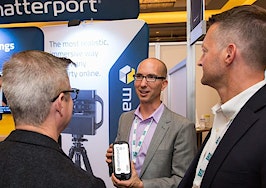- A 2016 Homeowners Survey polled 300 people about how they find real estate agents and the nature of existing relationships.
- Agents need to be consistently in touch with clients between buying and selling.
- 51 percent of homeowners rely on referrals to find their agent.
Have suggestions for products that you’d like to see reviewed by our real estate technology expert? Email Craig Rowe.
So long as nothing goes drastically wrong, patients are likely to book appointments with one dentist for their two cleanings per year. Homeowners who aren’t handy themselves will probably call on the same maintenance help to fix the garbage disposal and, a month later, a leaky kitchen faucet.
But how many real estate consumers have an agent on-hand between years of needing one?
About half, according to survey results released by email marketing software company Happy Grasshopper this morning, which show that 49 percent of homeowners do not have a “go-to” real estate agent.
The 2016 Homeowners Survey, featuring 300 responses with an age spread of 18 to 65 years, also revealed that 51 percent of homeowners find an agent through word-of-mouth, aka referrals.

Source: Happy Grasshopper
Perhaps the most staggering figure to emerge from the survey is that 70 percent of respondents reported doing “very little” to “some” research before choosing an agent.
Is this worrisome? I think it should be. It shows that many consumers believe agents are all the same, or offer little added value to the homebuying and selling processes.
I’m in agreement with Happy Grasshopper CEO Dan Stewart, who said in a statement: “The study shows a large percentage of the market is up for grabs, not only because many homeowners do not have a preferred agent, but also the fact that most homeowners aren’t doing heavy research before hiring one.”
Naturally, his company wants to help you keep in touch with the market.
And you should want to, too.
The gap between buying and selling
The survey also stated that 36 percent of homeowners like to receive information from agents, but 40 percent prefer reading about more than just the real estate market.
I now have an even better understanding of why so many software companies aim to build products to help agents bridge the marketing gap between buying and selling.

Source: Happy Grasshopper
Unfortunately, the average timeframe between the two types of agency relationships makes it very challenging to measure the efficacy of such products. Apps come and go on a person’s phone, and five years is a long time to use the same software product.
According to a blog post on Adobe’s website by writer Tim Waddell, director of product marketing for advertising solutions, ” …in a study conducted on data from over 125 million mobile phones downloading apps from the Play Store, the average app loses 77 percent of its users within three days after it’s installed. On top of that, 90 percent of the users stop using the app after a month, and only five users keep using any given app.”
Where is the disconnect? And how do you give people (who have no interest in moving) a sales message worth reading?
Tough questions.
Email marketing is, without a doubt, an effective, passive way to build and maintain a relationship with non-active buyers. But it has to be consistent to show results.
‘The most underrated and underused tactic’
Happy Grasshopper’s survey also showed that email is the preferred method of outreach. Yet, only 19 percent of respondents receive regular communications from real estate agents.
Matt Bohanon, team leader of Keller Williams Select in Sarasota, Florida, said in a statement: “Staying in touch is possibly the most underrated and underused tactic that I see from my colleagues in the industry, despite the fact that it’s as easy as sending an email.
“Keeping frequent communication, even with the people who seem like they’ll never buy or sell, will eventually pay off, maybe not through a transaction, but they’ll most likely refer you to their friends.”
Advertising campaigns, digital and print, combined with periodic phone calls and mail, will also help you span the years between transactions.
The most profound statement revealed by Happy Grasshopper’s survey is that long-lasting business relationships can’t be transaction-based; they’ll never last.
So there’s a big, untouched market out there, kids. Who wants it?
Have a technology product you would like to discuss? Email Craig Rowe.













